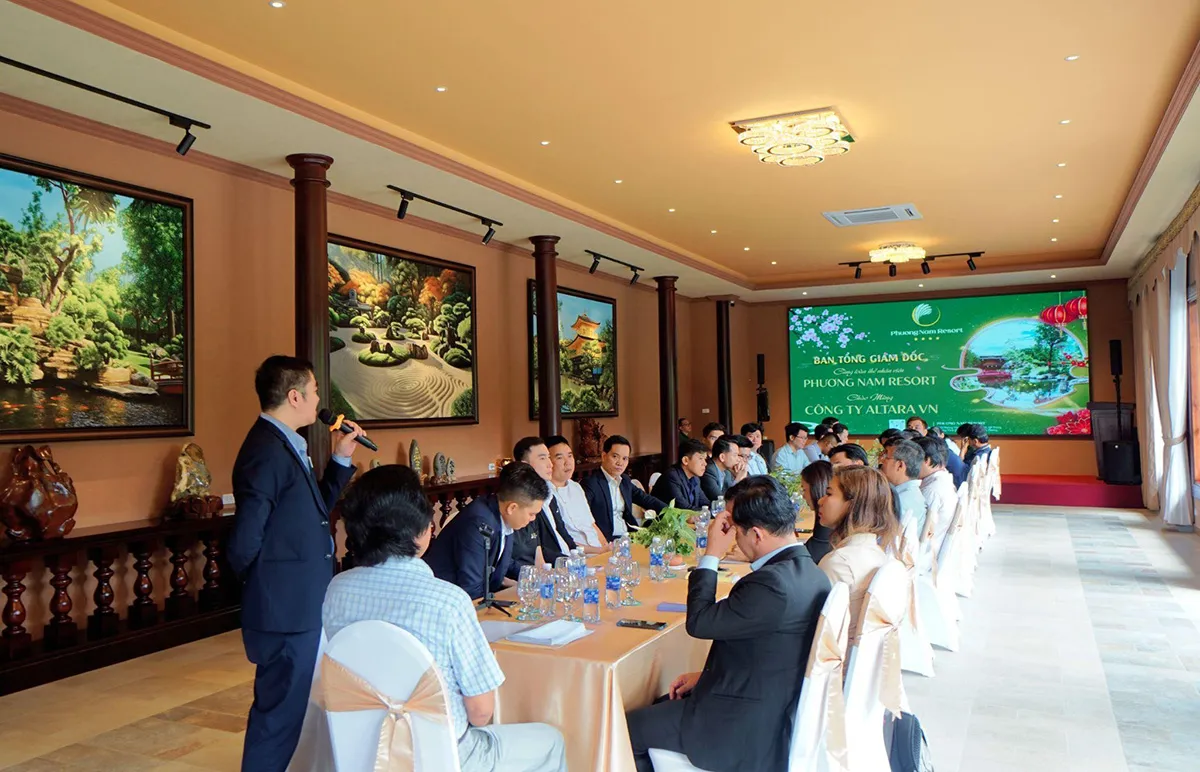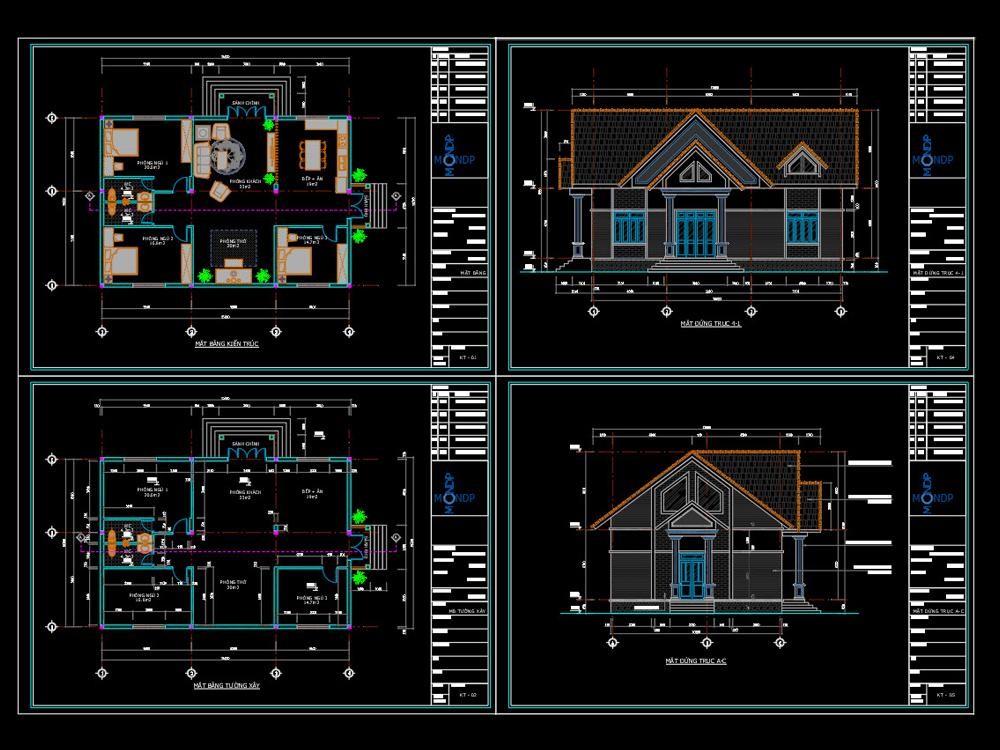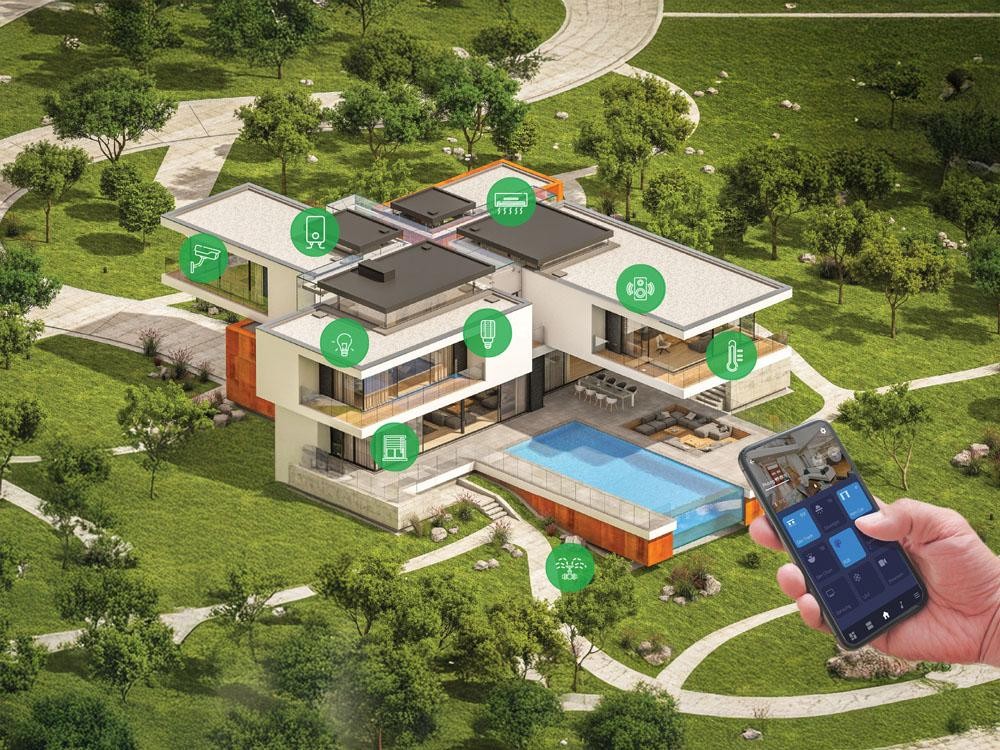Automatic fire alarm systems are a key factor to protect residents' lives as well as the quality and reputation of the investor. It is specially designed for early detection of anomalies such as smoke, fire, gas or carbon monoxide giving us time to evacuate safely.
Types of fire alarm systems
An automatic fire alarm system is a system integrated with specialized equipment. It can warn people about fire, explosion incidents are detected through images, sounds… There are four types of automatic fire alarm system:
1. Conventional fire alarm
This is an area-based fire alarm system. Each area has zones consisting of one or more monitoring devices. Moreover, for conventional fire alarms, each control panel works independently and each zone in an area needs a separate signal line. Therefore, when there is fire, the fire alarm device will not be able to know the exact location of the alarm.
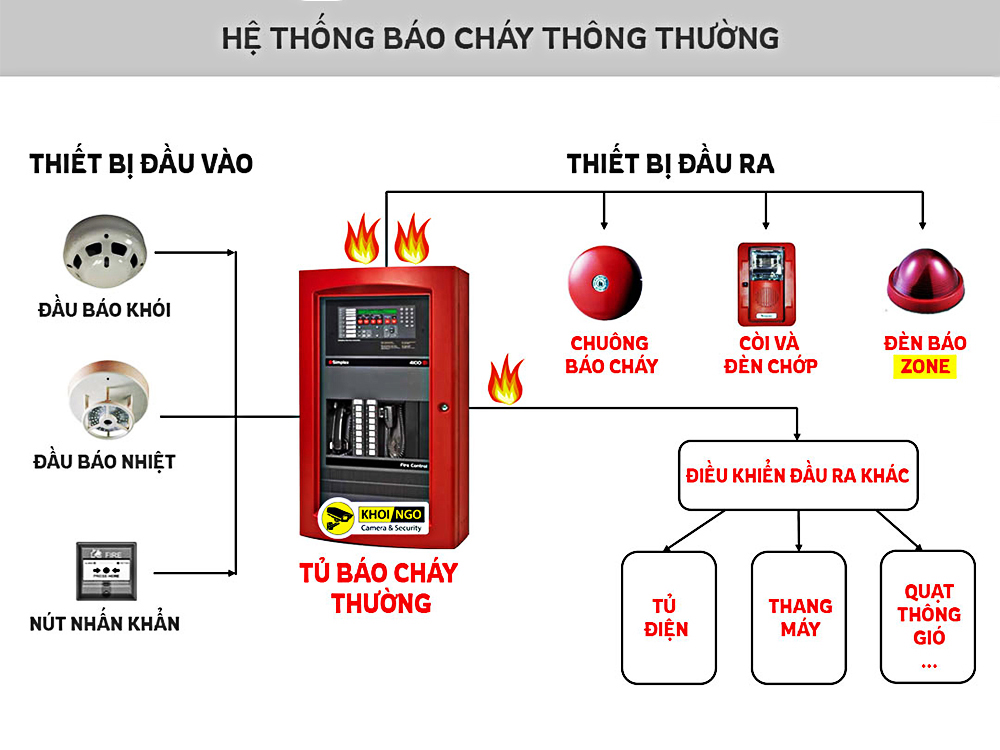
Conventional fire alarm system
2. Addressable fire alarm system
The system is more advantageous than the conventional fire alarm system. It is one of the systems used by many businesses because of the convenience and flexibility. All devices in the system are assigned a separate address and linked to each other. They show the exact location of the fire incident. Moreover, each loop can connect to other devices to save wires, provide information and monitor all connected devices through one server.

Addressable fire alarm system
3. Intelligent fire alarm system
In the above two systems, the sensor probes are not yet called "Intelligent". Because it can give signals when it detects anomalies but cannot analyze what is real and fake. In an intelligent fire alarm system, each sensor probe will have its own microprocessor, which evaluates the surrounding environment and sends a signal to the central control panel. Then it starts to review, analyze fire or failure situations.
4. Wireless fire alarm system
It has the same operating principle as the addressable fire alarm system. However, the only difference is the wireless connection from the sensor to the fire alarm center.
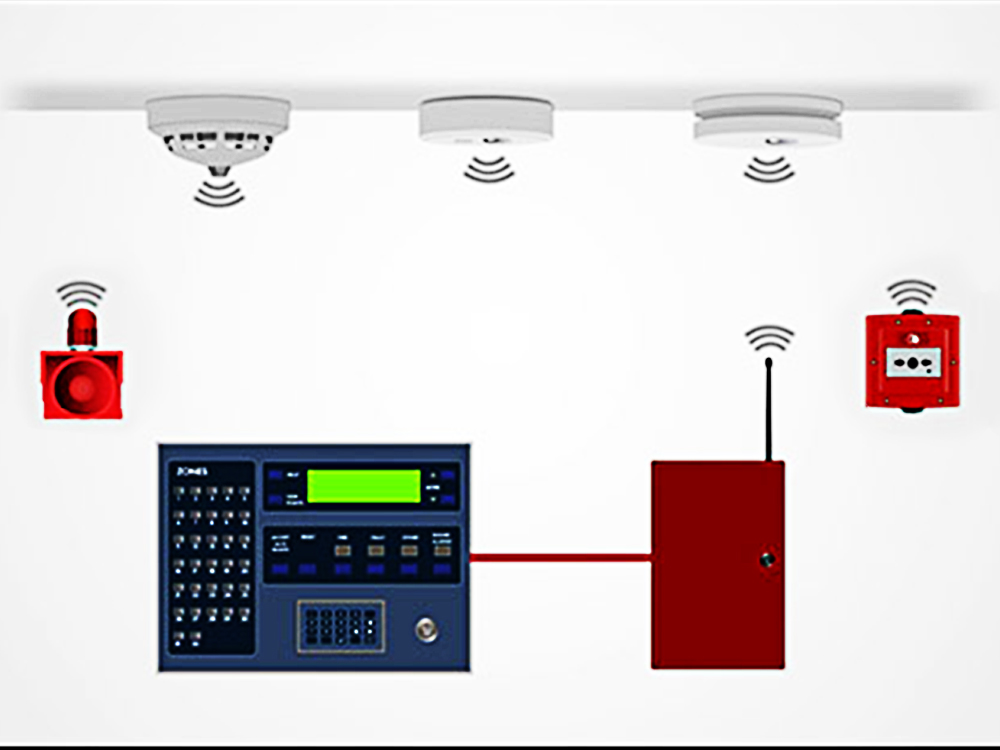
Wireless fire alarm system
Components of a fire alarm system
The fire alarm system consists of three main components with a closed operating principle:
1. Fire alarm control panel
It receives messages from the initiating devices, also known as inputs and performs its functions.
Types of panels are:
- Wired - wireless fire alarm panel
- Conventional fire alarm panel
- Addressable fire alarm panel
- Intelligent fire alarm panel
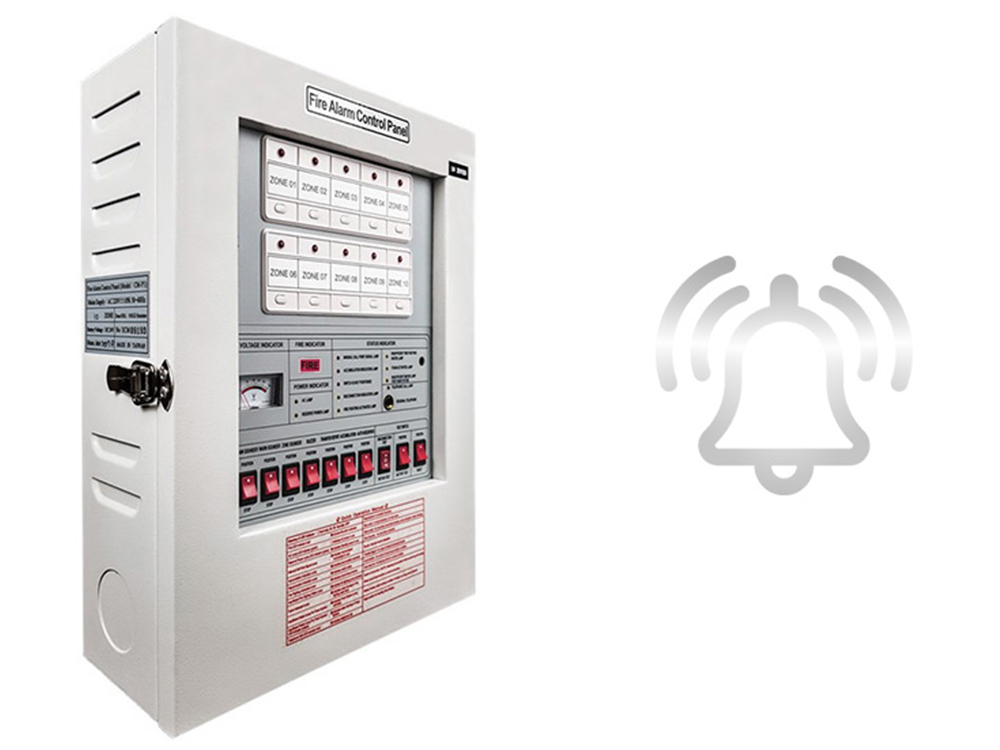
Fire alarm control panel
2. Initiation devices
Detectors are installed separately in areas and directly connected to the central fire alarm processing unit. When fire and explosion incidents occur, the system will automatically update via smoke, light, heat or emergency fire alarms through a button. Then it will send an emergency signal to the fire alarm center.
- Smoke detector: A smoke detector is a device that initiates an alarm signal when it senses smoke.They are installed in most buildings, especially places that have high temperaturor enclosed space There are two classifications of these devices, depending on the type of sensor they use to detect smoke particles. e
- Ionization detector: It is installed at places that have small facilities, low ceilings such as warehouses, technical rooms…This detector contains tiny traces of radioactive material between two electrically charged plates. Ions flow between these two charged plates, but smoke particles disrupt this. If this happens, the smoke detector goes off. In addition, This device also has highlighted advantages such as fast fire detection and warning, easy installation and repair. However, this type of smoke detector is easily affected by the environment not suitable for large spaces.
- Beam detector: The device functions based on the light blocking, and usually installed at critical places. This kind of smoke detector projects a beam of light across the area it’s protecting. If smoke crosses the path of the beam, the detector will respond. The beam detector can be installed for a large area with fast installation time, simple operation, combined with many different fire alarm centers. However, it only detects when there is a big fire, significant smoke, which is dangerous to life and property, and natural influences can distort the sensor.
The maximum operating time of the smoke detector is not more than 30 seconds with the impact threshold from -10 degrees C to 40 degrees C.
This device is used to detect unusual increases in temperature of the surrounding environment. It is usually installed in kitchens, enclosed spaces, offices, factories, places which have many heat-generating machinery and equipment, engines. Two main kinds of heat detectors are available. Fixed temperature heat detectors- fixed temperature heat detectors will respond when their operating elements reach or exceed a predetermined temperature. Rate-of-rise heat detectors - this type of heat detector will respond if the temperature increases at a rate that exceeds a specified value, around 9 degrees/min above current level.
The maximum impact time of the heat detector is 120 seconds with a working temperature of -10 degrees C to 170 degrees C.
This device is usually in places that have high risks of fire such as warehouses, kitchens, chemical stores. The fire detector is very sensitive to the ultraviolet rays emitted by the flame and immediately sends a signal to the processing center. The maximum impact time is 5 seconds and is optimally programmed to avoid false alarms.
3. Fire alarm output devices
These devices, playing a role in warning, evacuating in case of fire, include:
- Fire siren: the device emits a powerful sound to warn residents.
- Flashlight: it supports sirens to emit warning lights around, assisting in evacuation or escape through devices such as fire alarms; blinking lights off for warning; path guide lights; lights illuminate the way in case of emergency… Besides, flashing lights also combine with sirens to produce sound and light alarms.
- The automatic telephone dialer is installed in the fire alarm panel with a mobile SIM module. It will Automatically make emergency calls to preset phone numbers to notify. Usually, it will support from 5 to 8 contact phone numbers.
Taisei VN is one of the prominent foreign enterprises in the field of building management and operation in Vietnam. We not only provide management, security, and cleaning services inside the building, but also operate and maintain technical systems such as fire alarms, electrical systems, etc. We are partners of many prestigious businesses. With experienced skilled professionals, Taisei VN is committed to providing operation and maintenance services for fire alarm systems in buildings to meet the strict criteria of Customers.
.............................................
Contact information
Taisei VN
Address: R.1901 Saigon Trade Center, 37 Ton Duc Thang, Ben Nghe Ward, 1 District, Ho Chi Minh city.
Call Center: 0909 411 885 | 0911 401 955 | 0979 045 766
Email: Cs@caresolutions.com.vn
Linkedin: https://www.linkedin.com/company/altarahospitalitygroup/
Facebook: https://www.facebook.com/altara.com.vn/








